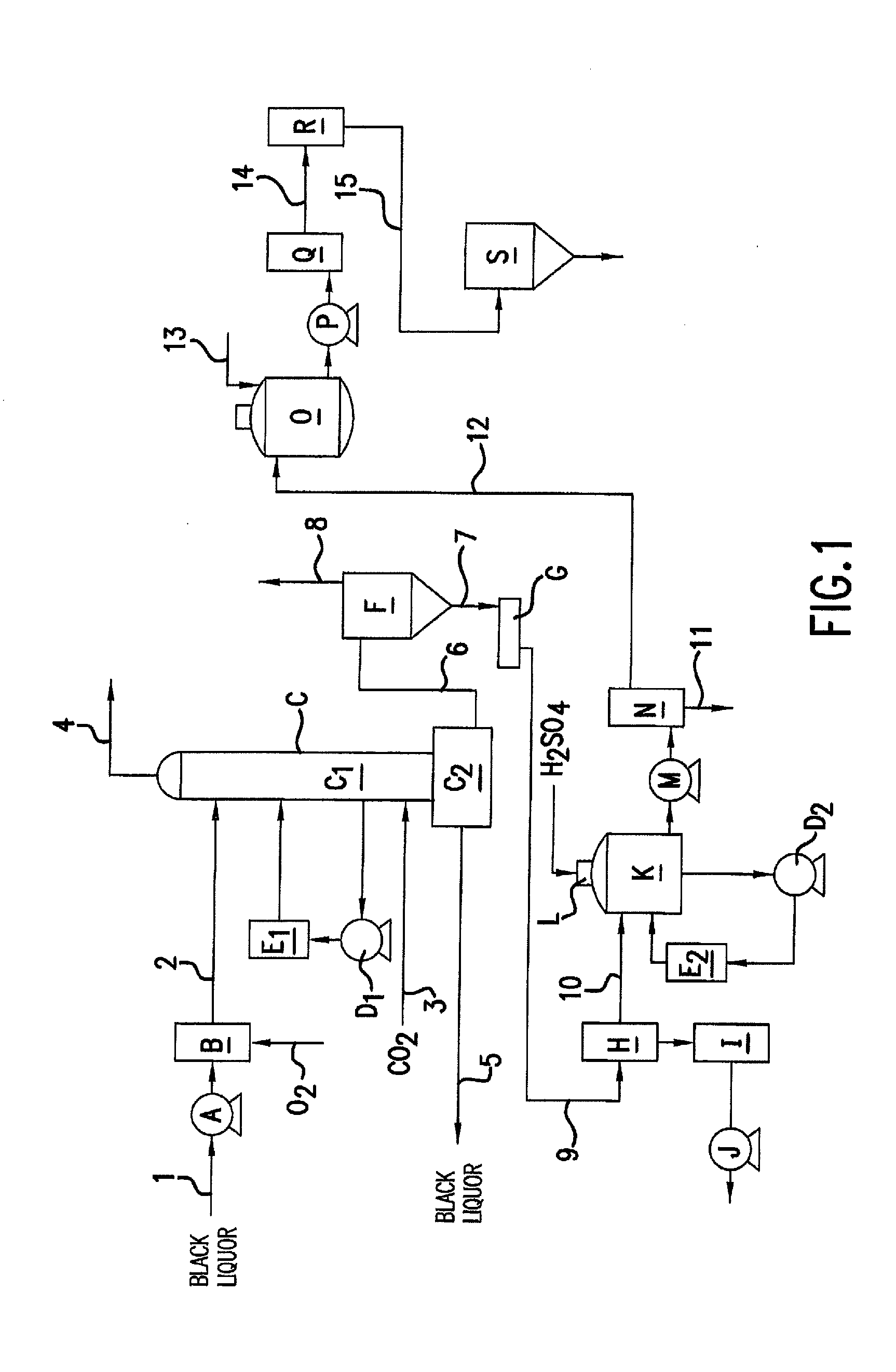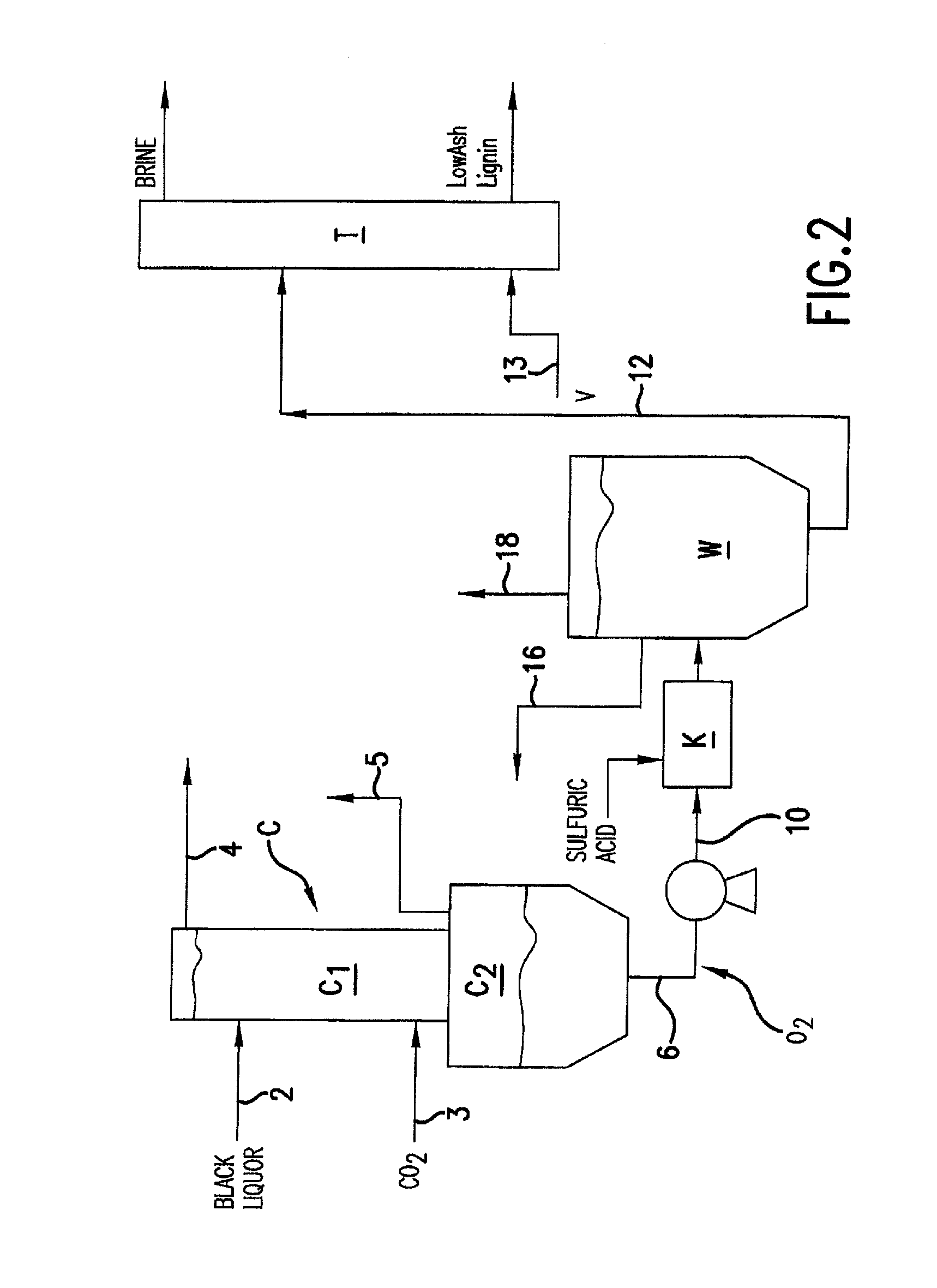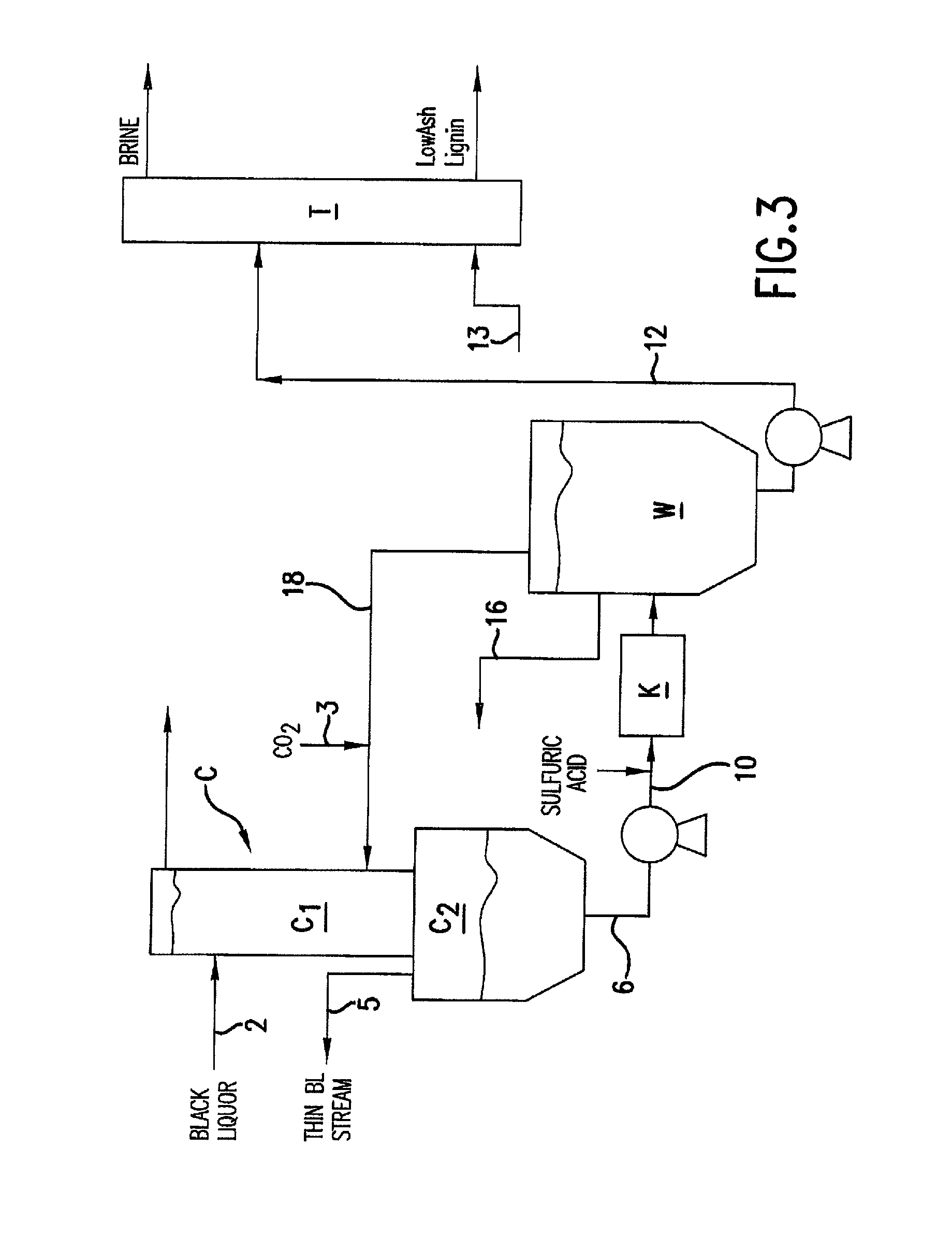Lignin product and process for making same
- Summary
- Abstract
- Description
- Claims
- Application Information
AI Technical Summary
Benefits of technology
Problems solved by technology
Method used
Image
Examples
example 1
[0040]Black liquor was oxidized using the Shockwave Power Reactor (SPR Hydrodynamics, Rome, Ga.). A single-pass and a two-pass operation were run on each of the two kraft papermaking black liquors. Data from the runs are shown in Table 1. The two-pass oxidized black liquor samples were used for the following examples.
Black Liquor ABlack Liquor Bat 38% solidsat 48% solids1st Pass on2nd Pass on1st Pass on2nd Pass onSPRSPRSPRSPRBlack Liquor Flow1.81.82.22.2(gpm)Oxygen Flow (scfm)3.02.74.03.8T inlet ° C.24542455T outlet ° C.93759899
example 2
Carbonation Run at 150° C. and 210 psig
[0041]A one-liter Parr reactor was charged with 1074 grams of black liquor A having 37.3% solids. The black liquor was heated to 150° C., introducing CO2 to raise the pressure to 210 psig. CO2 was allowed to enter the reactor through the sparger to maintain the pressure until the reaction was complete. The agitator speed was set at 60 rpm. A liquid-lignin phase was collected from the bottom of the reactor; a clean, smooth interface was observed for the interface. Analyses indicated that 37% of the lignin in the black liquor had been precipitated. The solids content of the liquid-lignin was 61%.
example 3
Carbonation Run at 115° C. and 140 psig
[0042]The one-liter Parr reactor was charged with 979 grams of Black Liquor A. The agitator was set at 60 rpm. The black liquor was heated to 115° C. and the pressure was maintained at 140 psig by the CO2. The reaction was allowed to continue to completion, which was essentially complete after 75 minutes. Liquid-lignin was collected from the bottom of the reactor; again a clean interface was observed. Analyses indicate that 33% of the lignin had been recovered in the liquid-lignin phase. The solids content of the liquid-lignin was 61%.
PUM
| Property | Measurement | Unit |
|---|---|---|
| Temperature | aaaaa | aaaaa |
| Temperature | aaaaa | aaaaa |
| Temperature | aaaaa | aaaaa |
Abstract
Description
Claims
Application Information
 Login to View More
Login to View More - R&D
- Intellectual Property
- Life Sciences
- Materials
- Tech Scout
- Unparalleled Data Quality
- Higher Quality Content
- 60% Fewer Hallucinations
Browse by: Latest US Patents, China's latest patents, Technical Efficacy Thesaurus, Application Domain, Technology Topic, Popular Technical Reports.
© 2025 PatSnap. All rights reserved.Legal|Privacy policy|Modern Slavery Act Transparency Statement|Sitemap|About US| Contact US: help@patsnap.com



